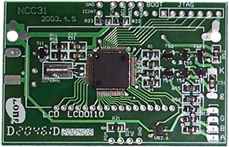News
Sometimes known as Printed Circuit Boards come handy to mechanically support and electrically connect electric components using conductive pathways, signal traces etched from copper sheets laminated onto a non-conductive substrate. Apart from being inexpensive and reliable, PCB's are used for high-volume production, though their initial cost is higher than wire-wrapped circuits.

Generally, a Printed Circuit Board's design is determined vaguely. This is done to define the functionality as well as mechanical and electrical products. This is where a PCB Prototype plays the key role in the design and creation of printed circuit boards. This allows the user to review and test the design of the PCB; and to improve the structure before the entire production, if needed.
The process of PCB prototype goes through extreme conditions; everything is checked while the manufacturing is in process including the traces and leads. Once the holes are drilled with special equipments and the printed circuit board is created, the prototype is tested to confirm its efficiency and functionality.
However, under any kind of failure in the prototype, a new modified prototype needs to be built. The prototype is kept under scrutiny until it performs as required.
A decade ago PCB fabrication had to be accompanied with a drawing for results. But in this short period, it has gone all digital. Open any electronic gadget that we take for granted in our day to day life like television, cell phone or computers etc. It will contain a printed circuit board (PCB). A PCB is a board with all electrical connections and tracks all the other electronic components within a gadget at a later stage. It is like a railway network complete with all signals and communications

Different PCB materials are used for variety of PCB specifications and process in PCB prototyping and production.
To get different results and outputs, one can create or design a PCB using:
1. Using Polyimide for flexibility - Polyimide can sustain hot temperature, which makes it most suitable for use in electrical insulation applications.
2. Arlon for Longer Life at Higher Temperatures - Arlon materials are useful for the PCB fabrication of high performance and frequency dependent printed circuit manufacturing.
3. Isola Range for PCB prototype - Isola range is a high performance pre-peg system. Its low dielectric constant and dissipation element helps in creating the ideal material for designing broad band circuits.

